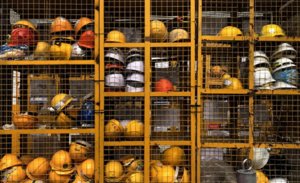
Occupational health is an important part of running a successful business. Ignoring workplace hazards can lead to decreased productivity, higher absenteeism, and legal complications. Companies can create a safer work environment by understanding common occupational risks and implementing mitigation strategies. Here are three common workplace-related health risks and some tips for reducing them.
1. Respiratory Diseases and Airborne Hazards
Exposure to dust, fumes, chemicals, and biological agents in workplaces such as construction sites, factories, and healthcare facilities can lead to serious respiratory diseases. Conditions like asthma, chronic obstructive pulmonary disease (COPD), and occupational lung diseases are common among workers in high-risk environments.
For employees exposed to asbestos and diagnosed with mesothelioma, seeking legal assistance is essential. Mesothelioma attorneys in California specialize in helping affected workers and their families obtain compensation for medical expenses, lost wages, and other damages caused by workplace asbestos exposure. These attorneys can guide individuals through legal claims against negligent employers or manufacturers of asbestos-containing products.
Ensuring proper ventilation in work areas and reducing the risk of inhaling harmful particles is essential to mitigate exposure to airborne contaminants. Industries with prevalent airborne pollutants should implement effective dust and fume extraction systems to maintain air quality. Providing employees with appropriate Personal Protective Equipment (PPE), such as respirators and masks, minimizes health risks.
Regular air quality monitoring is crucial for promptly detecting and addressing potential respiratory hazards. Training employees on safely handling chemicals and materials that may release harmful fumes also helps prevent occupational exposure and promotes a safer work environment.
2. Musculoskeletal Disorders (MSDs)
Musculoskeletal disorders (MSDs) are among the most common workplace injuries, affecting employees across various industries. These include conditions like carpal tunnel syndrome, tendonitis, and lower back pain. MSDs often result from repetitive motions, poor ergonomics, and heavy lifting. Workplaces can prevent these disorders through the following strategies:
- Encouragement of regular breaks and stretching exercises to prevent repetitive strain injuries
- Provision of ergonomic furniture and equipment, such as adjustable chairs, keyboards, and standing desks
- Educating employees on proper posture and lifting techniques to reduce strain
- Implementing workstation assessments to identify and correct ergonomic hazards
3. Noise-Induced Hearing Loss
Noise-induced hearing loss is a significant risk in industries such as construction, manufacturing, and aviation, where prolonged exposure to high noise levels can lead to permanent hearing damage. Features of this condition include:
- Difficulty hearing high-pitched sounds (birds chirping, doorbells, or alarms)
- Ringing, buzzing, or roaring in the ears (tinnitus)
- Muffled or distorted hearing, making it hard to understand speech, especially in noisy environments
- A feeling of fullness or pressure in the ears after exposure to loud noise
To prevent this, workplaces should conduct regular noise assessments to monitor sound levels and ensure they remain within safe limits. Employers should provide workers with appropriate hearing protection. These include earplugs or noise-canceling earmuffs to minimize exposure. For individuals already noticing signs of hearing decline, Audien Hearing offers affordable and effective hearing aids designed to restore clarity and comfort in everyday communication.
Additionally, you can consider implementing quiet zones or soundproofing measures that can help reduce overall noise levels in the work environment. Regular hearing tests should also be scheduled for employees in high-risk settings to detect early signs of hearing loss and take preventive action.
Endnote
In essence, fostering a healthy work environment isn’t just a matter of compliance; it’s an investment in your people and your business’s long-term success. By proactively addressing common occupational health risks like musculoskeletal disorders, respiratory hazards, and noise-induced hearing loss, companies demonstrate a genuine commitment to their employees’ well-being. Remember, a healthy workplace is a thriving workplace!





